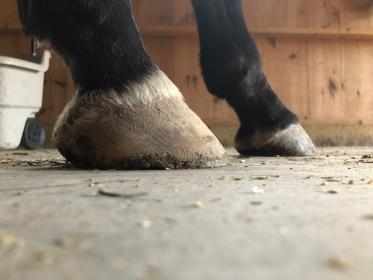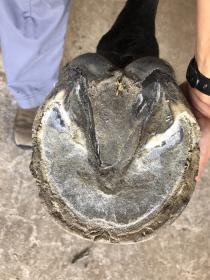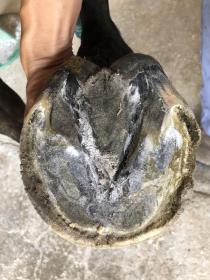Thank you guys so much! This horse’s feet have been a source of endless stress to me. I agree with JB that the original feet were cringeworthy (and the eminent lameness vet who did the PPE called that “really a very expert shoe job” :eek:). Seller’s farrier isn’t an option anyway due to location.
To answer some questions (sorry if I miss any), I got the hoof rads in December at the local teaching hospital because I was concerned about NPA and felt that there should have been more progress in the angles by then, although to be fair Farrier A had only done him twice at that point. I got rads at the end of the second cycle to help guide the third cycle. The vet who did the rads talked over them with me but didn’t take any measurements or give written recommendations so I decided to consult the podiatrist to get some more formal recommendations. He and the farrier he works with shod the horse once in late January, with Farrier A observing and learning. Farrier A then did their best to continue trimming/shoeing horse in that manner. (I know it’s annoying but I’m using “they” on purpose here because one of the farriers in question is a woman and I don’t want to bias anybody’s opinion…)
Unfortunately consulting the podiatrist wasn’t the solution I had hoped for. He’s really hard to get a straight answer out of. He contradicts himself a lot, even within a single conversation (like says one thing at the beginning and the opposite later). I’ve also asked him about things he’s written in articles and he’s asked me with astonishment, “Where did you hear that?” like it’s the craziest thing he’s ever heard. It’s bizarre. He is suuuuuper reluctant to recommend farriers because it causes hard feelings, although he did say when I first asked him about Farrier B that he had worked with them before and they did good work (then the next time I asked he said he didn’t really know them??). One of the things I couldn’t get a straight answer about was how long to use the wedge pads and how we would know when we could stop. I can’t use the podiatrist regularly because that one shoeing cost over $800 :eek:, I had to take a whole day off work to ship the horse to him, and I have two other horses to get shod.
I decided to try Farrier B after seeing them do good work on a friend’s horses. They have a good reputation and used to shoe at a vet school. One questionable thing they have said/done is that they prefer to “put breakover in the shoe, not the foot,” unless truly necessary. I think this horse really needs his toes brought back. I am not happy with the direction things are going with Farrier B and meanwhile they cost 50% more than Farrier A!




